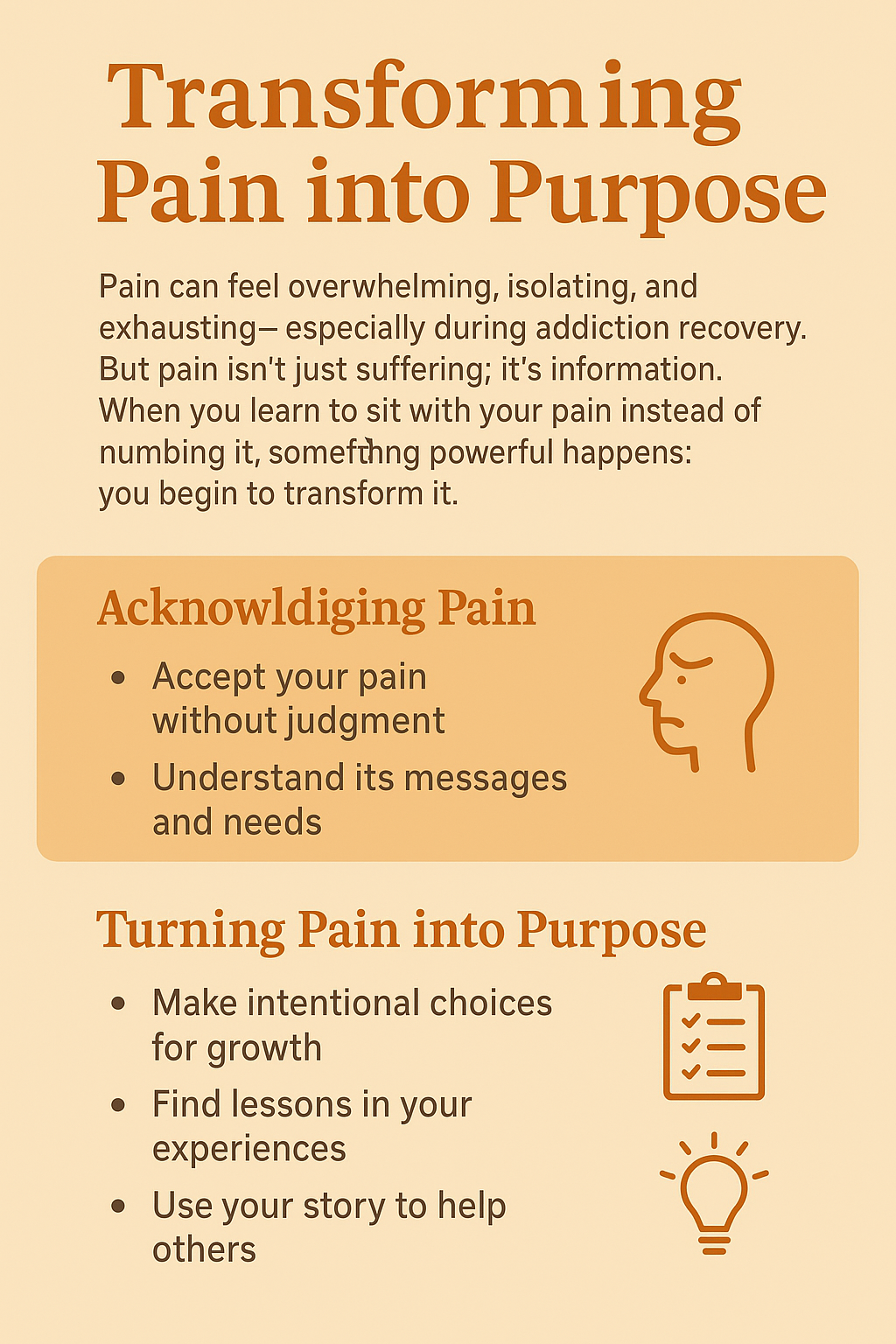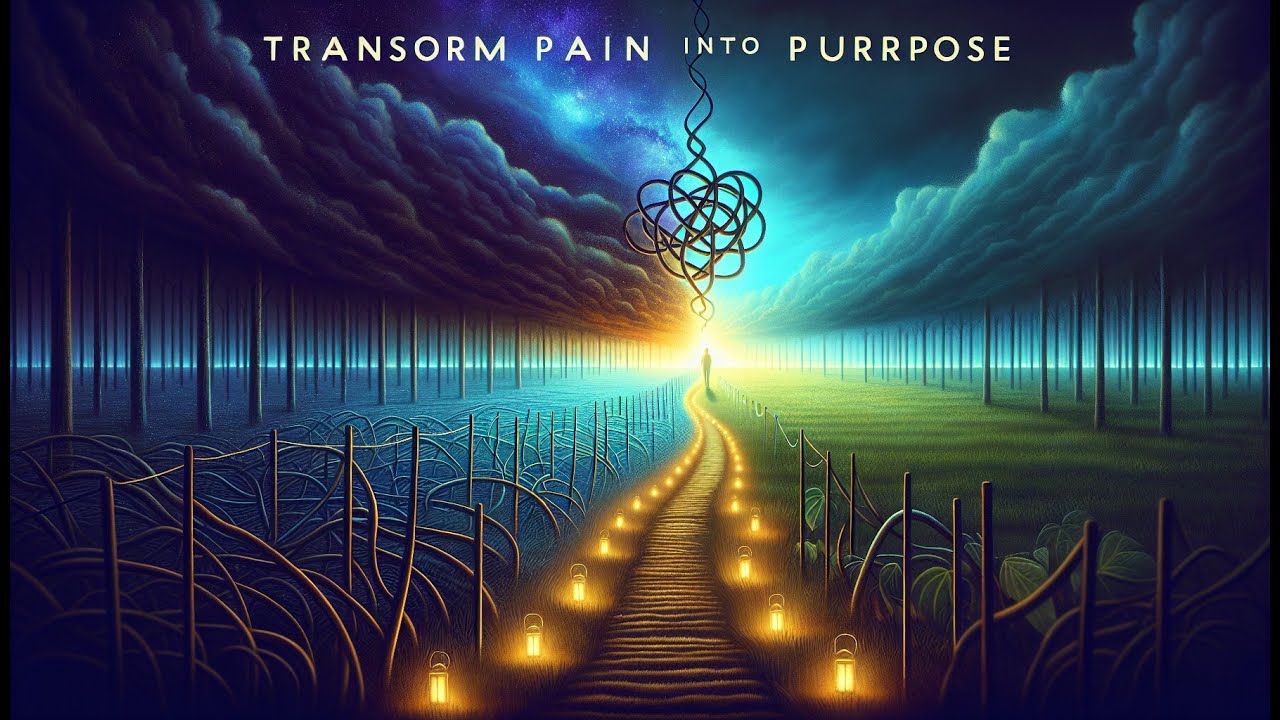Pain and struggle often come hand in hand with addiction recovery. But pain can pave the way to some of the most powerful changes in our lives. I’ve learned that real progress happens not by avoiding pain, but by learning how to use it for something that gives us meaning and direction. In this guide, I’m sharing what I know about channeling pain into purpose while working through addiction recovery.
Why Pain Has a Place in Recovery
Addiction recovery brings up challenging emotions—regret, guilt, loss, anger, sadness, and sometimes just feeling like you’ve hit rock bottom. These feelings aren’t easy to handle, and many of us wish we could flip a switch to turn them off. But these emotions are part of the healing process. When I stopped fighting all those tough feelings, I noticed they started changing. Pain became fuel for growth instead of a barrier.
I’ve come across research showing that finding purpose can actually reduce the risk of relapse and boost long-term recovery outcomes (source). The idea is simple: people with a sense of purpose are more likely to stay motivated and less likely to fall back into old habits when things get difficult.
Understanding the Role of Purpose in Recovery
Purpose gives life direction. It’s not just a lofty idea; it’s actually a practical tool for recovery. Purpose can be as simple as being a better friend, parent, partner, or employee. It can be as big as wanting to help others or change your community for the better. Purpose doesn’t have to be some epic mission; it just needs to feel real to you.
I found that stumbling upon a sense of purpose helped me get out of the cycle of obsessing about my past mistakes. It pushed me to take small but steady steps forward instead of staying stuck. Even studies from psychology back this up: people who set goals and attach meaning to their experiences tend to feel more in control and hopeful during recovery (source).
First Steps: Recognizing Pain and Letting Yourself Feel It
The first move in transforming pain is simply letting yourself feel it, instead of bottling everything up. I know firsthand that trying to numb or ignore challenging emotions only keeps them festering. Here’s what helped me get started:
- Write it Down: Journaling gave me a safe space to let out what I was carrying. Putting words to those feelings took away a bit of their power. You might try different journaling methods, such as writing a daily note to yourself or keeping a gratitude list, to see what works best for you.
- Talk it Out: Finding just one person to confide in—a counselor, sponsor, or close friend—made it clear that I wasn’t alone in my struggle. If you can, join a support group and listen or share when you’re ready. The simple act of saying things out loud can shift the burden.
- Accept That it’s Normal: Recovery isn’t supposed to be easy. Emotions can be intense, but feeling them doesn’t mean you’re failing. Over time, I realized that recognizing this truth made things feel more manageable.
Facing pain with honesty is where the switch-up begins. Instead of it being something to run away from, pain becomes something you can actually work with.
Building Purpose: How to Channel Pain in a New Direction
I didn’t wake up with a grand plan for my new life. Purpose grew over time, little by little. These are some practical steps I followed and recommend:
- Reflect on Your Experiences: Ask yourself, What have I learned from my struggles so far? How could I use these lessons to help myself or others? For me, reflection usually meant slow mornings and honest conversations.
- Set Small, Personal Goals: Early on, my only goal was making it through one day clean. Over time, that grew into other goals like fixing broken relationships or learning a new skill. Setting tiny, specific goals, like calling a friend or taking a fifteen-minute walk, gave me a sense of progress.
- Help Others: Supporting someone else—whether through a support group, volunteering, or even just listening—brought more purpose than I ever expected. Sometimes, just sharing a helpful tip or a kind word makes a difference for both you and the other person.
- Reconnect with What Matters: Sometimes it’s hobbies, art, nature, faith, or pets that get you through the day. Rediscovering activities that brought joy before addiction can open the door to purpose. Try out old hobbies, explore new ones, or spend time in places that help you relax.
Bit by bit, every step in this direction can help you get a better sense of who you are now and what you want from your recovery adventure.
Common Roadblocks and How to Manage Them
Transforming pain into purpose isn’t always straightforward. There are plenty of bumps in the road. Here are some of the most common issues I’ve faced and strategies that have helped:
- Overwhelming Guilt or Shame: These feelings can make it tough to see any positive future. Therapy, support groups, or honest talks with trusted people slowly lightened that weight for me. Sometimes guided self-forgiveness exercises also kickstart the healing process.
- Fear of Judgment: It’s natural to worry how others will see you. I found that surrounding myself with folks who get it, like in peer support meetings, helped more than hiding away. When possible, seek out supportive communities and avoid people who bring you down.
- Relapses: Slipping up is part of recovery for many people. Being honest about it and learning from what led to the slip made future relapses less likely. Start again as soon as you can; use each relapse as a lesson instead of a defeat.
- Not Knowing Where to Start: When I felt lost, I kept things really simple. Focusing on self-care, one helpful action a day, and celebrating even the smallest wins made things feel possible again. Even if it means making a bed or eating a healthy meal, every positive step counts.
Overwhelming Guilt or Shame
Guilt can be enormous, especially when reflecting on missed opportunities or hurt relationships. I learned that these feelings are signs that I care about others and my own values. Working through them with a professional counselor, or sometimes just forgiving myself, was really important. It helped me let go of the burden and start building a new story. Exploring self-compassion exercises or guided meditations can also give a boost during these challenging moments.
Relapses
When a relapse happened, it felt like all the progress had vanished. But that wasn’t true. It helped to remember each day sober was still real, and every setback taught me more about what I needed to stay strong next time. Making a relapse prevention plan and reaching out for more support were two strategies that kept me moving forward, even after a slip.
Advanced Strategies for Finding Purpose After Pain
Building on the basics, I stumbled upon some ways to deepen that sense of purpose and create lasting change. Borrowing tools from therapy, community involvement, and long-term goal setting can move things forward. Here’s what worked well for me and others I’ve met in recovery spaces:
Storytelling: Sharing my story at a meeting or in writing helped me see value in my experience. Others related, and it meant the pain I went through wasn’t for nothing. Sometimes, our own adventure inspires someone else to keep going. If groups intimidate you, even writing your journey in a private journal can give a boost.
Service: Giving back can be as simple as helping at a food pantry, organizing a neighborhood cleanup, or participating in peer recovery groups. Being helpful to others shifts focus from pain to contribution, building self-respect in the process. Service can be formal or casual; even helping a neighbor counts.
Creative Expression: Recovery can spark new creative outlets, such as painting, music, or writing. These offer a way to turn hard feelings into something meaningful and even eye-catching. Choose what feels natural—doodling, playing an instrument, or just listening to inspiring music can break up tough days.
Ongoing Self-Reflection: Checking in with myself about what feels important now versus a few months ago keeps my sense of purpose fresh and real. Goals and sources of meaning can change over time, and that’s completely normal. Try regular check-ins with yourself or a trusted person to see how your priorities might be shifting.
What Role Does Community Play?
Isolation and shame keep pain locked up. I’ve seen (and lived) that one of the most powerful things you can do is connect with others who are on a similar path. Group meetings, online forums, or sober meetups are full of people who totally understand what you’re going through. Community brings practical advice, encouragement, and accountability. Sometimes, just listening to others makes your own pain feel lighter and your own sense of purpose clearer.
- Peer Support: Group meetings, such as 12-step or SMART Recovery, offer opportunities to learn from others and to provide support in return. Even just listening during meetings builds connections.
- Volunteer Groups: Getting involved in recovery-focused events or local charities connects you to purpose-driven people. Volunteer settings often provide ongoing friendship and opportunities to make real change together.
Sharing meals, events, or just coffee with others can also help you step outside your own head and build mutual support, which is essential for long-term recovery.
Practical FAQs
Some of the questions that often come up when talking about transforming pain into purpose in recovery:
How do I even start finding purpose?
Start by asking yourself what makes you care about getting better. Is it family? Friends? Wanting to try something new? Even if it’s small, it counts. Purpose might change over time, and that’s okay. Try out different activities or groups, and see what feels good.
What if I don’t have a big dream?
You don’t need one. Purpose can be about enjoying daily routines, helping a neighbor, or developing a skill. Little things done with intention count just as much. Celebrate small wins, and remember that little bits of meaning add up.
How do I handle setbacks?
Setbacks are part of life and recovery. Try to focus on what caused the struggle, and see it as a valuable lesson for your next step forward. Show yourself some patience. Reaching out for support and keeping things simple can keep setbacks from turning into full stops.
Can pain really lead to something good?
Yes. Pain can guide you toward what truly matters to you and what changes you want to make. Plenty of people, including me, have found that the most challenging times led to the most meaningful growth. When you set pain to work for your recovery, it becomes the first building block in making a life you care about.
Wrapping Up
Transforming pain into purpose isn’t about making everything perfect. It’s about creating meaningful switch-ups in small, honest ways that add up. Whether it’s helping others, stumbling upon new passions, or just making it through another day, each step builds a sense of purpose. No matter where you are in recovery, your pain can be the groundwork for something powerful and new. Recovery becomes a lot more doable and rewarding when you give your pain a job to do. Remember that you’re not alone and that every small step truly counts.
Video: Transforming Pain Into Purpose

